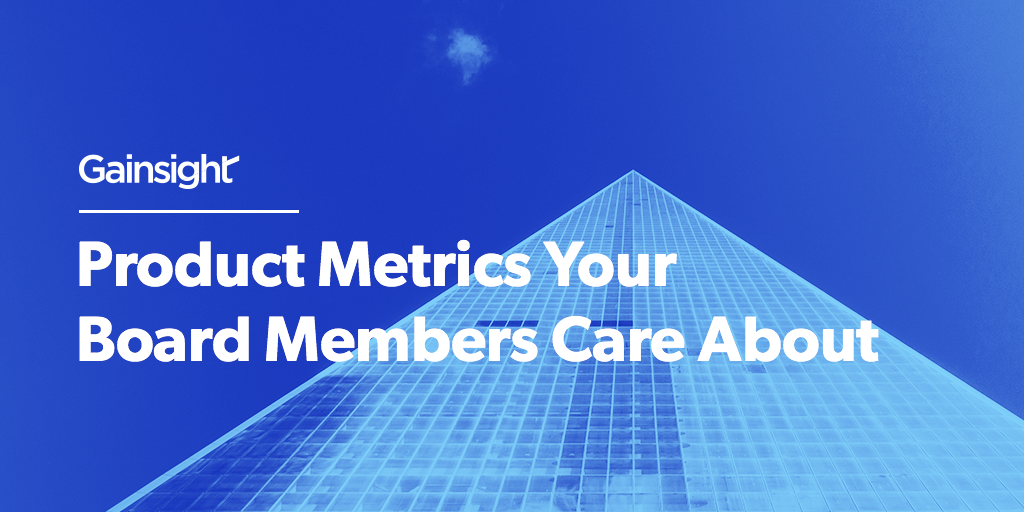Boards are evolving—and thank goodness for that!
The pace of business has accelerated and industries are transforming. Boards are realizing they must change as well and will only be successful with diverse perspectives. In parallel, the board meeting agenda is shifting.
Six years ago, people didn’t present about customer success (CS) in the boardroom unless it was a major escalation. And even then it was ad hoc and anecdotal—it took awhile for the CS conversation to be as quantifiable as sales or marketing. Now, boards everywhere understand that CS is a critical part of the conversation.
The same is happening now with Product.
Throughout this blog post, I’ll share examples of the Gainsight PX dashboard that we show to our board members. You can make this article into an interactive experience by starting a free trial of Gainsight PX and playing around with these dashboards yourself!
Board Agendas: Then and Now
Historically, board meeting agendas were often limited to corporate governance, financial performance, and sales activity. But in the world of SaaS, the entire venture is the product and therefore needs to be part of the conversation. It’s part of a broader evolution where boards have realized if they aren’t discussing the company’s clients, product, and customer success strategy, they have a blindspot.
I sat down with Ajay Agarwal, Partner at Bain Capital Ventures, and he put it very well:
“The way Product is talked about in the boardroom today reminds me a lot of how customers were talked about ten years ago. Every board and company presents Product a little differently. Nothing quantifiable—highlights in releases, roadmaps, tradeoffs. What we’re seeing is a similar inflection point that CS experienced now happening around Product and how it’s discussed in the boardroom.
I think it’s driven in part by the fact that an increasingly higher percentage of how a company interacts with their customers is through their product or application. In that scenario, the reality is that the product is a leading indicator of customer health, happiness, and of where there are opportunities of to increase value or expansion. I think there’s a growing awareness that more time needs to be spent on Product in the board meeting.”
What Product Leaders Should Bring to the Discussion
So, yes, boards have started to realize that in digital businesses, the entire venture is the product. But where should boards start? “Product” can often be a complex and unwieldy topic. In comparison, most of the other parts of the board meeting are highly measurable:
- Finance: revenue, operating income, etc.
- Sales: bookings, pipeline, etc.
- Customer Success: retention, health scores, etc.
Since many board members don’t come from technical backgrounds, they often struggle to figure out how to engage. The trick is to whittle your presentation down to the important metrics that impact growth and revenue. I’ve been in my fair share of board meetings and I’m also on the other side, sitting on boards. From a board member’s perspective, it’s hard to provide feedback other than “great job” if parts of the agenda aren’t quantified. If there are quantified, strategic elements of the agenda, it will facilitate a good, productive discussion.
In our experience, board meetings typically center around three types of topics:
- Recurring KPIs (Key Performance Indicators)
- Reporting on Company Initiatives
- Analysis of Challenges and Opportunities
I encourage you to think about your board packet by putting yourself in the shoes of a board member. Think about the framework that you want to use that will result in the best dialogue. In the following sections, I’ll share how we format our board packet to create an engaging, objective discussion with our board around Product.
Recurring KPIs for Product
If you have a SaaS business where you can see exactly how your customers are using your product there are a lot of metrics you might be tempted to add to your packet. The first step is to agree on what “good” means to your company and what KPIs are the best at representing that.
At Gainsight, we oriented our board around three core datasets:
- Active customers
- Active users
- Retention cohorts
For example, if you’re focusing on user activity as an indicator of success, you first need to define what “success” is. Are you using Monthly Active Users vs. Daily Active Users? Is five days a week the goal or just one day a week? These will always be specific to your product. As an example, we show the board our trend of active customers over time.
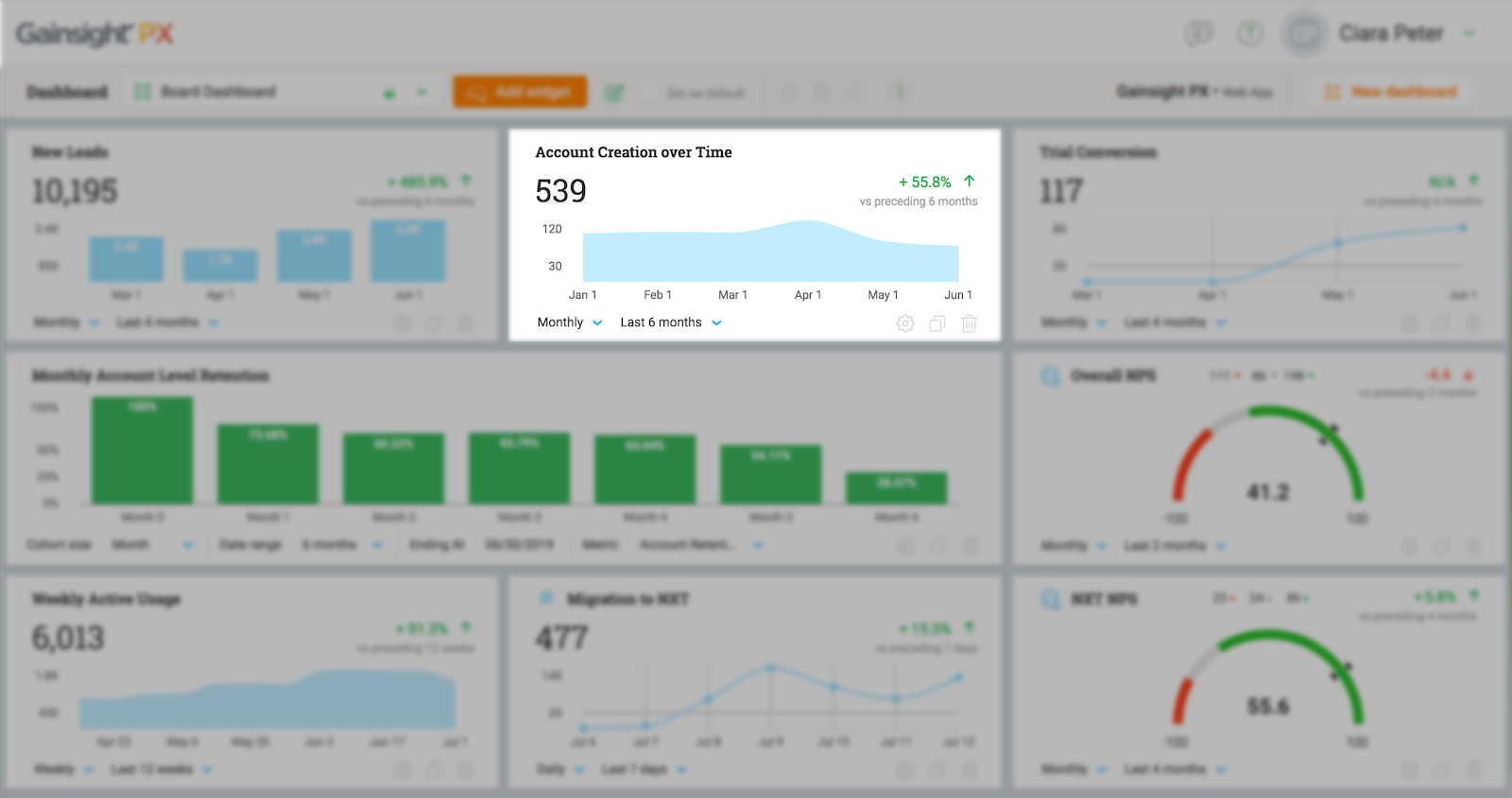
Chart representing the creation of accounts month to month
Then we demonstrate our growth in active users over that same period.
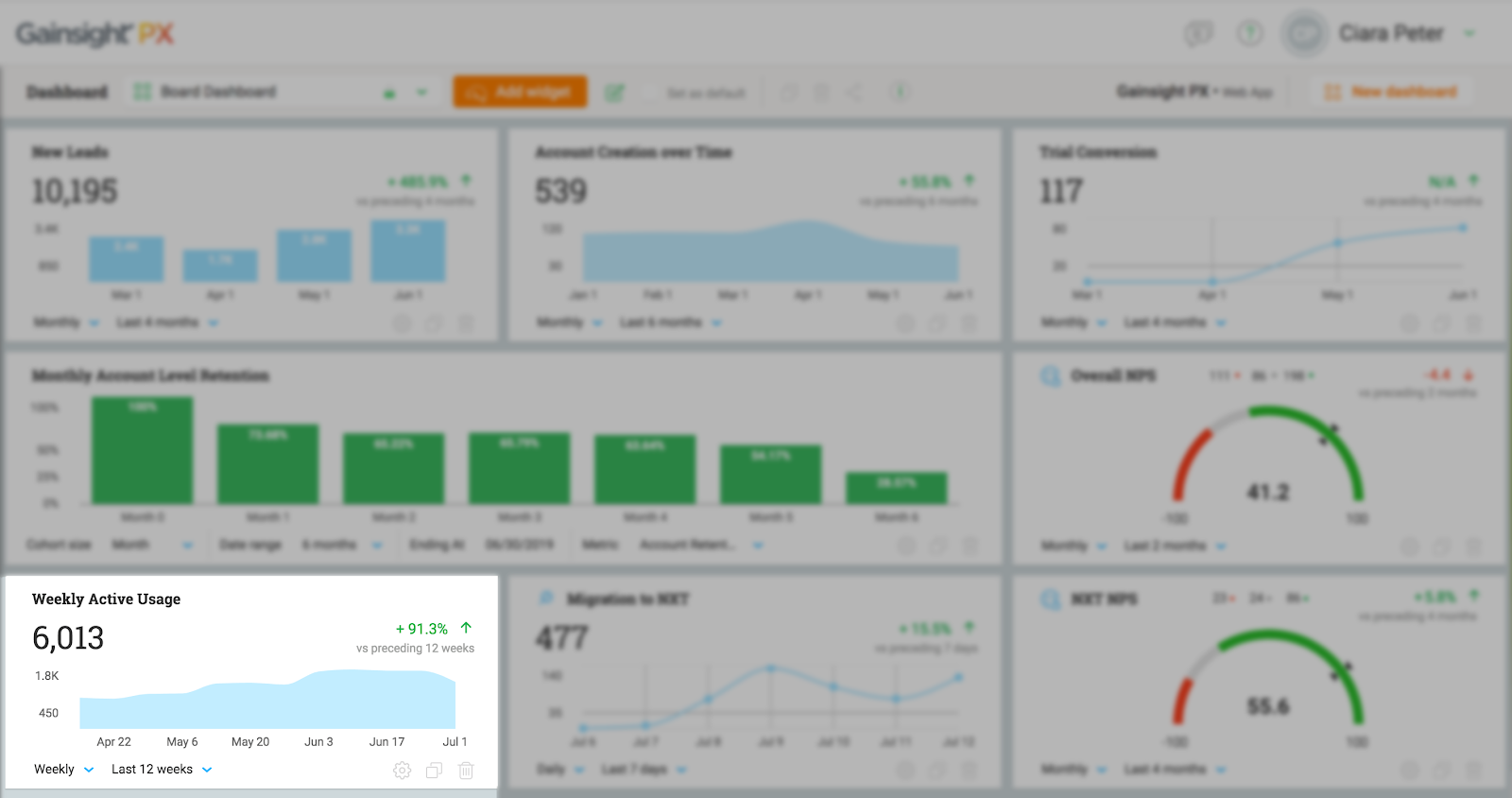
Chart representing the weekly active usage of our users
To make sure we’re not just on a “treadmill” (adding users and losing them), we look at our cohorts around user retention. I don’t think companies do enough cohort-based views. When you look at your metrics and you say, “We’ve grown our users 20% last quarter to this quarter,” is that 20% all net new? Or did we lose some? Introducing cohorts can help uncover deeper meaning to your numbers.
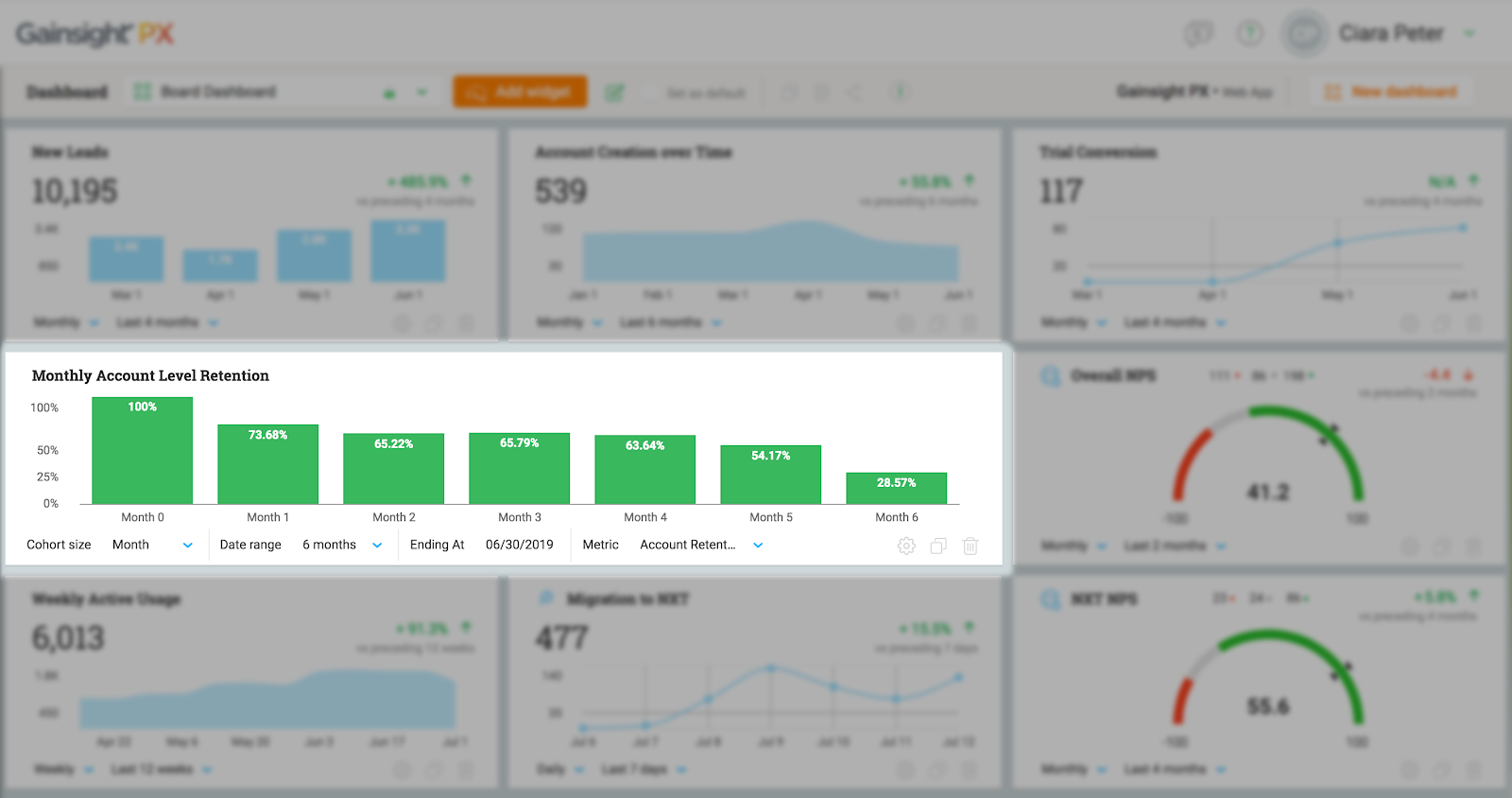
Chart representing the monthly retention by account level
When it comes to presenting, back it up by telling them why you chose them. I highly suggest having a dialogue upfront with your board about the metrics you want to track. This will put you closer to having a “why” behind each metric you present.
Reporting on Company Initiatives
Boards don’t operate in a static environment. Companies have goals and projects and boards often want updates—and hopefully, you have a lot of new things to present in each meeting. It’s important that these conversations are done with just as much objectivity as its KPI counterpart.
We’ve recently overhauled our technical platform to bring our users a new evolution in the Gainsight platform. As we roll out this new evolution, we want to look at what the experience is like for our users. How are they using the application? What’s similar? What’s different?
Through analytics and thoughtfulness, we’ve noticed that our new platform is retaining customers at a higher level and customers are staying and using it for longer. They’re more active and getting more feature usage! Being able to have that dialogue is critical. Maybe you’ll have results at the opposite end and things aren’t performing as well. The key thing is to understand the facts and have a way to assess initiatives.
To ensure this, we created a set of dashboards to evaluate our new platform initiative.
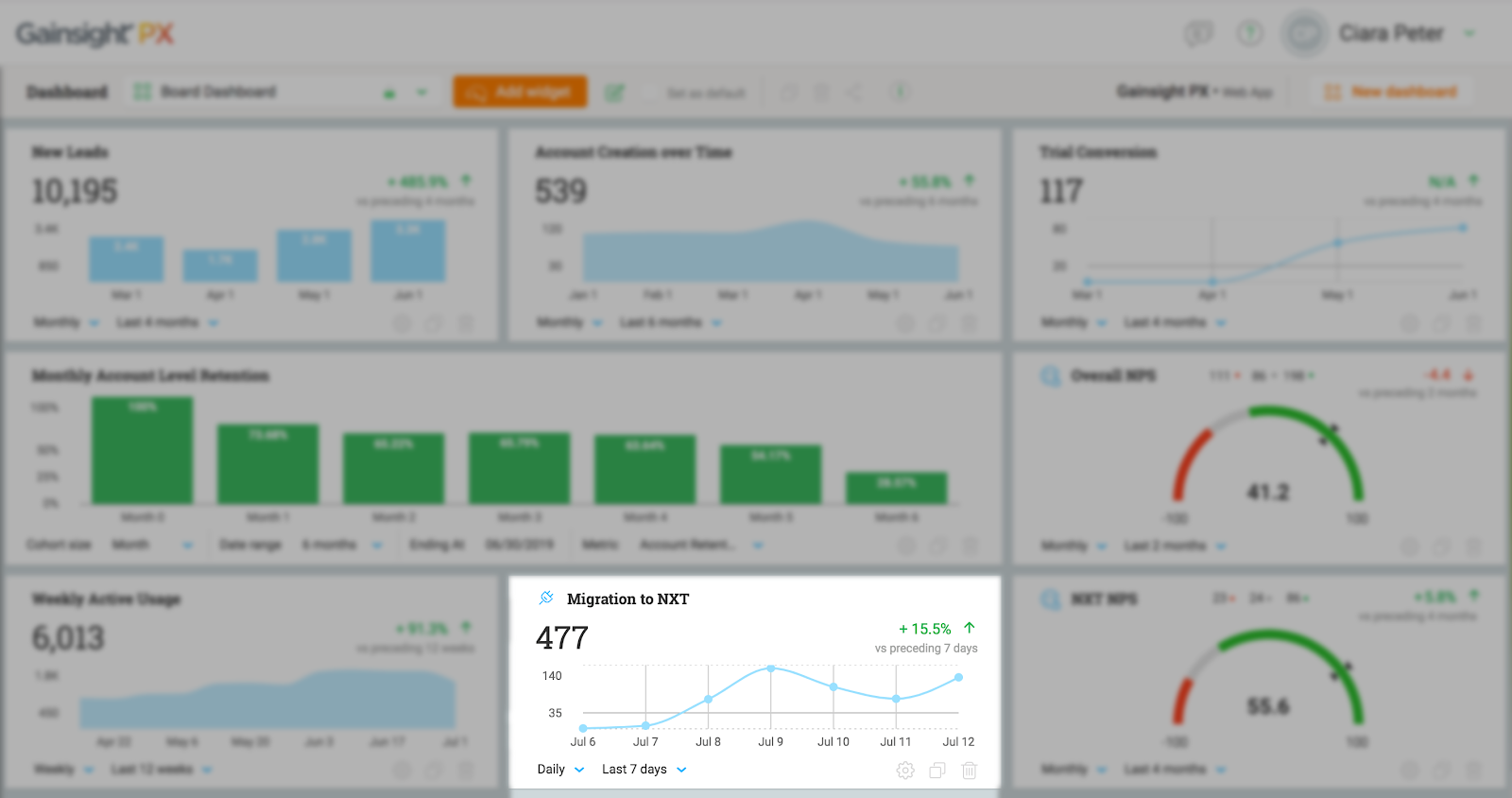
Chart of users migrating to Gainsight NXT, the newest evolution of the Gainsight platform.
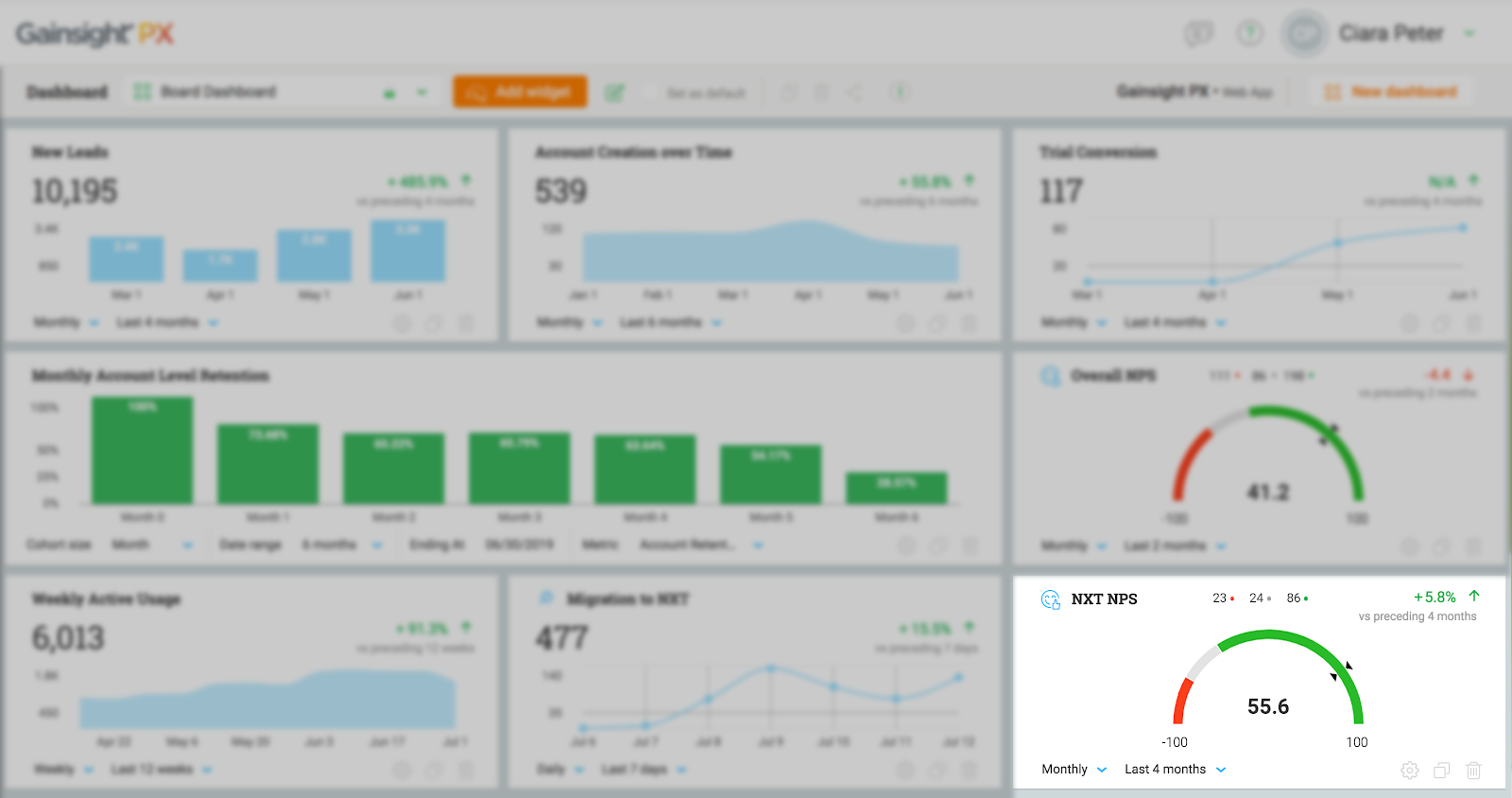
Chart representing the NPS of users using Gainsight NXT.
Analysis of Challenges and Opportunities for Product
Things come up in the business—a spike in churn, a drop in NPS, sales dropping because of perceptions in the market—the question is, “how do you bring information to bear in that discussion?”
Like many businesses, we often present data to our board about analyses we’re conducting. Just recently, we wanted to see how our Research & Development (R&D) efforts correlated to customer retention. As such, we looked at the correlation of usage of some of our new features to overall user activity.
We recently released a game-changing upgrade to our product mapper feature that automates the product instrumentation process. Using the chart that measures monthly account-level retention, we can filter down by our various new features. Is this new feature affecting account retention? With this data, we can answer that question and have a constructive conversation around it.

Chart representing the monthly account level retention of users that have interacted with our new automated Product Mapper.
Crush Your Next Board Meeting
The more you know about your business, the fewer numbers you’ll need to show because you’re already familiar with the ones that really matter. We joke about it here at Gainsight—over the years we’ve gone from a board packet of 100+ slides to a much, much shorter length. It continues to shrink as we discover what’s really meaningful.
If you just add a product section to your board agenda and don’t think about structure, you’re likely to get a lot of opinions and not many insights. But if you elevate Product in your board meeting, and do it in a thoughtful way, you can make sure the core of your company becomes the center of your executive discussions.
I’ll dive deeper into this topic with and Ajay Agarwal, Partner at Bain Capital Ventures, in our webinar, “Product Leaders: Here’s How to Crush Your Next Board Meeting.” I love exploring these ideas, especially with someone like Ajay who has seen this evolution happen before with customer success and can bring that perspective to the conversation. We’ll discuss how to prepare for your next board meeting, important KPIs to cover, and more.
